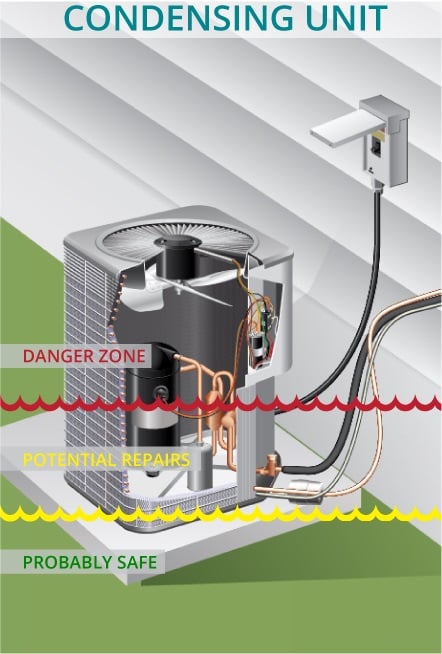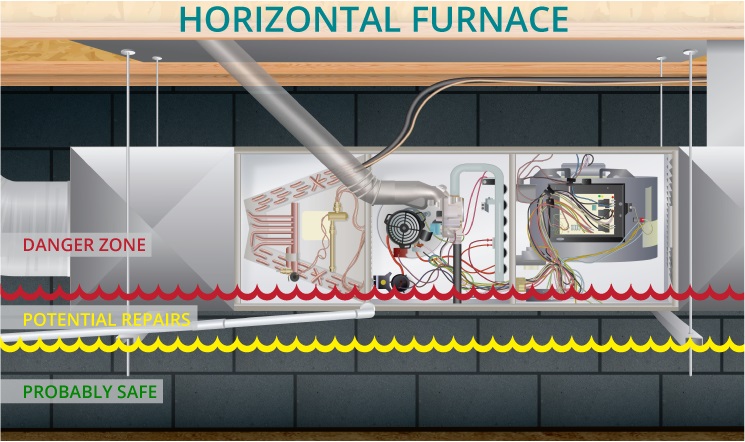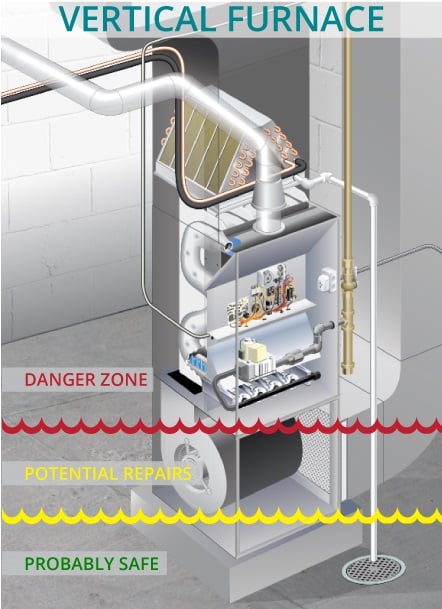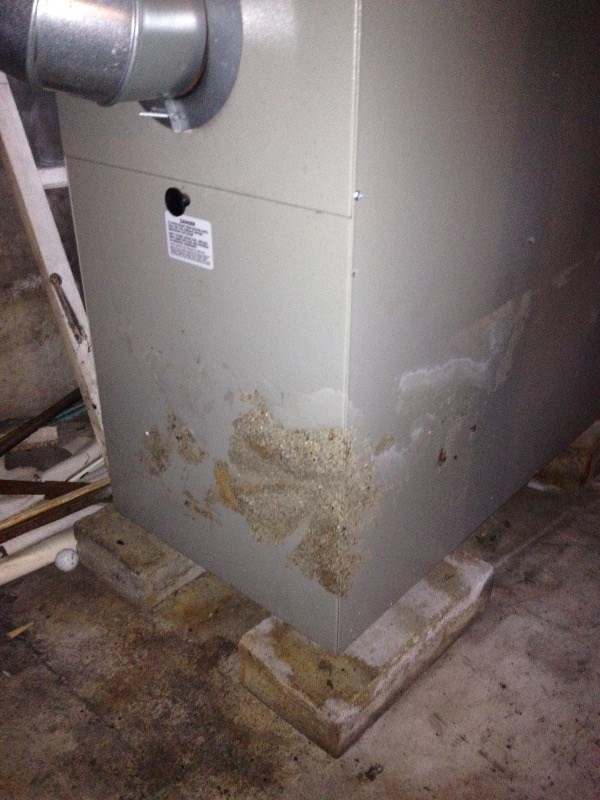Identifying water-damaged HVAC systems after a hurricane
The following article on “Identifying water-damaged HVAC systems after a hurricane”, written by Matt Livingston of HVAC Investigators, was originally published on Property Casualty 360.
As the floodwaters recede across the Gulf Coast following Hurricane Harvey, the arduous process of claims investigation begins to unfold. CAT adjusters from across the country are travelling to the impacted areas to assess property losses and assist insurance carriers in reaching accurate settlements.
For many adjusters, one of the most difficult property components to assess is the HVAC system. HVAC equipment is simply too expensive to indiscriminately write replacement estimates, and accurate pricing and availability is also difficult for adjusters to access. Moreover, determining if the equipment is damaged is itself a difficult task – it’s not always a matter of just turning on the system to determine whether or not it works. Many of the properties are still without power, and once restored, diagnosis may prove difficult without first determining the full extent of potential damages.
This illustration depicts the amount of water that can accumulate before affecting a ground-mounted condensing unit.
Outdoor equipment inspection
The first component to be assessed for damage is the outdoor condensing unit, typically located on the ground or on the roof of the property. If the unit is located on the roof, it is unlikely that it suffered any damage from floodwaters, although it should still be checked for any additional storm damage.
Condensing units are designed to withstand the elements, but muddy, rushing floodwaters can impact ground-mounted systems and lead to repair actions ranging from a simple coil cleaning to a full system replacement. The water can typically rise to the compressor terminals before causing significant damage, as seen in the illustration here.
When assessing the outdoor condensing unit, here are a few things to look for:
- Check for dirt and debris stuck in the condenser coil fins. Where the debris ends typically indicates how high the floodwaters rose on the unit.
- Water lines on the system’s back panel, its electrical compartment, or an adjacent building wall also provide clues as to how much of the condensing unit was exposed.
- Based on how high the water rose, determine which components the water may have compromised, such as the compressor, electrical compartment and fan motor.
- Look to see if the condensing unit shifted on the pad. If shifting did occur, check the copper lineset for any breaks or kinks. A breached lineset may have allowed contaminates to enter the refrigerant loop, which could damage the compressor and other components.
Related: Know these covered losses and exclusions after a collapse
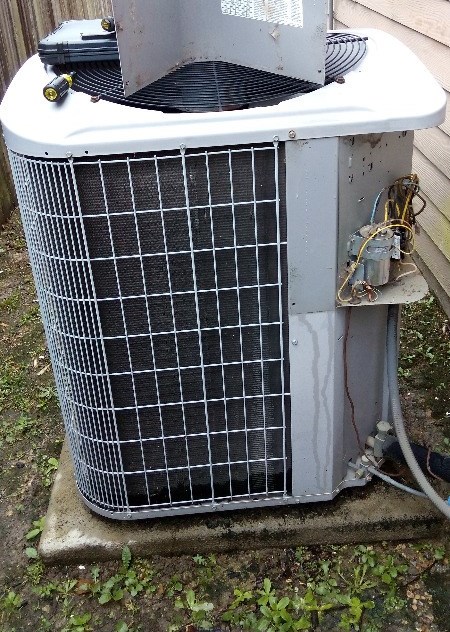
Indoor equipment inspection
Depending on the type of HVAC system, an indoor furnace or air handler may also be present. The location and orientation of the indoor equipment will influence the amount of damage the unit sustained. A horizontal furnace mounted in the crawlspace is typically more vulnerable to water damage than a vertical furnace in a lower floor utility closet or basement (unless the basement was completely flooded). Furnaces or air handlers mounted in the attic or on a second floor, on the other hand, may have no damage whatsoever.
How various water levels can impact a horizontally-mounted furnace in a crawlspace
Water levels in horizontal systems
A horizontal furnace or air handler in a crawlspace is particularly susceptible to water damage. The amount of water that can inundate the crawlspace before impacting the equipment depends on how high the system is mounted (sometimes dictated by building code) above the ground. Once the water reaches the system, however, it will likely suffer significant damage, as seen in the illustration here.
Related: Texas’ No. 1 homeowners’ insurer responds to Harvey, offers tips
How a vertically-mounted furnace can be affected by floodwaters.
Vertically mounted units
A vertically mounted furnace may be more protected from water damage. This orientation will not typically sustain significant damage until the water reaches the burner compartment (found in the middle of the unit, several inches above ground level), as seen in the illustration here.
Here are a few things to look for when assessing the indoor equipment for floodwater damage:
- Look for a water line on the outside of the furnace/air handler, on rigid ductwork or on an adjacent wall.
- Check the control board for water damage. Often (depending on when it was printed), the board’s writing will “bleed” when exposed to water, providing a useful clue in estimating the water’s reach.
- Examine any sheet metal ductwork for premature rusting or corrosion.
- Flex ductwork will sag and duct board will swell after getting wet, indicating floodwater contact.
- The insulation on the inside of the blower compartment will often be damaged by the water.
Related: Keys to identifying hail damage to HVAC condenser coils
Water line on furnace indicating how high the floodwaters rose
Once you have determined (both indoor and outdoor) how much water damage an HVAC system sustained, you can begin the process of establishing a proper scope of repairs. It is important to keep in mind that even in severe flood scenarios it is rare that a full system replacement is necessary. In many cases, individual components can be replaced and systems can be cleaned to achieve pre-loss condition. Remember, a portion of the system (or in the case of packaged units, the full system) may be located high enough on the property to avoid the floodwaters from the hurricane, and could thus significantly influence the required scope of repairs.
For information on wind and lightning damage accompanying hurricane claims, you can access our adjuster toolkit for hurricane claims. You can also review a labeled split system diagram and a labeled packaged unit diagram, to assist in identifying components and their susceptibility to floodwater damage.


